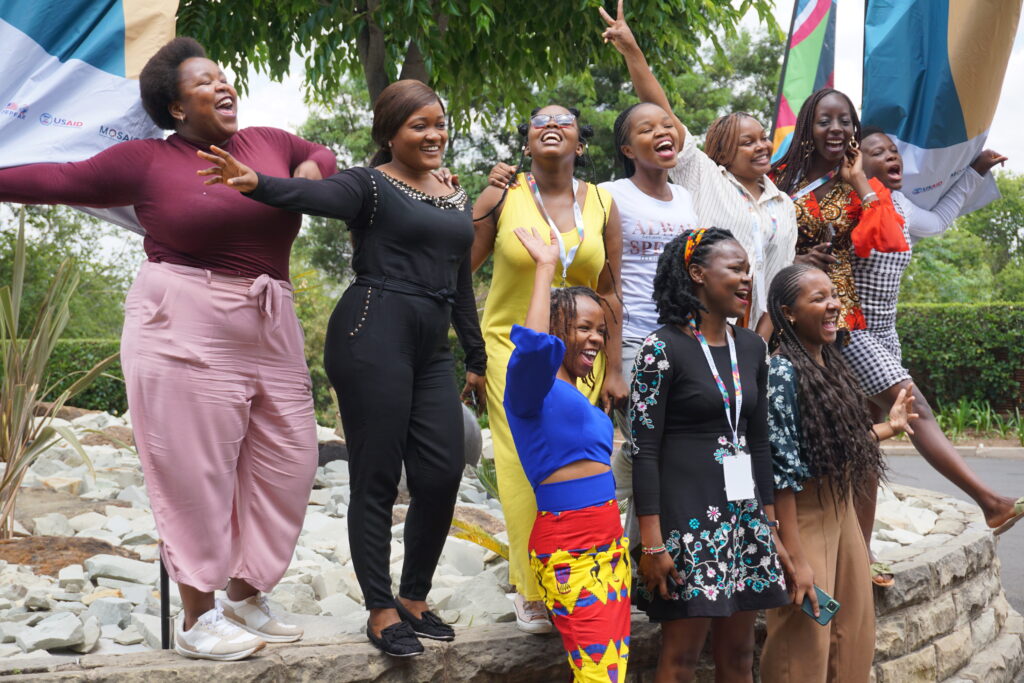Maximizing Options to Advance Informed Choice for HIV Prevention (MOSAIC)
Funded by: USAID | Duration: 2021 – 2026
Maximizing Options to Advance Informed Choice for HIV Prevention (MOSAIC) is a five-year (2021-2026) global project funded by the U.S. President’s Emergency Plan for AIDS Relief (PEPFAR) through the U.S. Agency for International Development (USAID) to help adolescent girls and young women and other women1 prevent HIV by accelerating introduction and scale-up of new and emerging biomedical prevention products.
MOSAIC works across multiple countries to implement user-centered research and research translation efforts to identify, understand, and remove barriers to new product introduction, access, and use; coordinate and provide technical assistance to global, national, and subnational stakeholders to expedite product launch and scale-up; and strengthen the capacity of a wide range of local partners to perform essential functions that support the introduction of HIV prevention products. The MOSAIC consortium is led by FHI 360 along with core partners Wits Reproductive Health and HIV Institute (Wits RHI), Pangaea Zimbabwe AIDS Trust (PZAT), LVCT Health, Jhpiego, and AVAC.

Local partner leadership and engagement, particularly in subSaharan Africa, is intrinsic to the project’s approach to expediting women’s access to new HIV prevention products. The work is also supported by technical partners from Afton Bloom, Avenir Health, Columbia University, Mann Global Health, RTI International, the University of Pittsburgh, and the University of Washington. Working closely with product developers, MOSAIC will advance access to and uptake within a multi-product market that includes options such as oral pre-exposure prophylaxis (oral PrEP), the dapivirine ring (also called PrEP ring), and injectable long-acting cabotegravir (CAB PrEP). Priority countries for the consortium’s work are Eswatini, Kenya, Lesotho, Namibia, Nigeria, South Africa, Uganda, Zambia, and Zimbabwe.
Project Objective and Approach
MOSAIC’s objective is to accelerate introduction and scale-up of new biomedical prevention products and expedite their availability, acceptance, uptake, and impact in PEPFAR programs to help adolescent girls and young women and other women prevent HIV and other infectious diseases. To achieve this objective, MOSAIC will work in alignment with five strategic priorities:
- Promote a user-centered approach in which the needs and preferences of users — especially adolescent girls and young women — are understood and addressed in product introduction and scale-up.
- Conduct research to expand the evidence base on how to effectively enhance product availability, acceptability, uptake, and effective use.
- Coordinate and provide technical assistance to global, national, and subnational stakeholders to expedite product introduction in policy and programs by addressing issues related to regulatory review, policy development, resource mobilization, supply chain, delivery models and platforms, monitoring and evaluation, surveillance, and demand generation.
- Implement research utilization activities and establish mechanisms for rapid, effective knowledge exchange among key stakeholders to facilitate application of existing and emerging evidence on product introduction in policy and programs.
- Strengthen and sustain local partner capacity to advocate for, design, and implement high-quality product introduction activities and research
The CATALYST Study
Catalyzing access to new prevention products to stop HIV (CATALYST) is MOSAIC’s flagship product introduction study. The goal is to characterize and assess the implementation of an enhanced service delivery package providing choice of oral PrEP, PrEP ring, and injectable cabotegravir for PrEP among women at PEPFAR/USAID delivery sites in Kenya, Lesotho, South Africa, Uganda, and Zimbabwe. The CATALYST study will also use quality improvement methods to refine components and identify a core service delivery package for PrEP choice.
What MOSAIC Means for Women
Our vision is that after five years, women in sub-Saharan Africa will have access to multiple effective PrEP products that meet their changing needs and desires; that health systems will be enabled to support informed choice and effective use through policies, programming, and differentiated service delivery; and that cost, impact, and targeting guidance will be in place to support efficient use of resources.
For more resources:
MOSAIC – PrEPWatch
MOSAIC Across the Product Introduction Framework (prepwatch.org)

